That nickname, by the way, came about after the concave shape of the building, reminiscent of one of the early, chunky "Walkie-Talkie" handsets, helped focus the sun's rays to devastating effect. Looming large in the city's skyline the then newly unveiled glass façade pinpointed those sun beams on a hapless fancy sportscar parked somewhere on the road below which was left partly molten and deformed. Cue: some very funny headlines and much ridicule. Architects and engineers have since promised they've seen to it so this won't ever happen again.
Oh and yes, there are plants, too - it's called the Sky Garden after all. Wedged either side between stairs and the middle tract, the planting slopes like a hillside up to the restaurant-level, consisting of favourites like tree-ferns, Strelizia, Ficus lyrata and Cycadales. These plantings make the place much more pleasant, but they don't take centre-stage. (And how could they compete with a setting like this.) It amused me to see that a garden in the sky is evidently not high enough to be out of reach for the humble greenhouse whitefly for there were tell-tale yellow sticky traps aplenty. Comfort to less high-flying gardeners everywhere, I'd say.
The Sky Garden's own website describes it as a series of richly planted terraces, dominated by drought resistant Mediterranean and South African species. "Individual plants have been chosen to work in harmony with the particular quality of light found under the roof canopy." Which presumably means "a lot, year-round, though not as much sunshine as in more sun-favoured parts of the world such as the Mediterranean". The website also claims that "colour and flowers flourish all year round". Well, those we witnessed came from a lonely cymbidium orchid and a handful of Strelizia flowers. But January is perhaps not the best month to judge, I'd like to see it again at some other time of year.
.
All said, I'd wholeheartedly recommend the experience if the weather is half-decent (i.e. you are likely to see more than an all-enveloping glum grey) but perhaps not primarily for the planting.
The actual station is subterranean - 18 metres below the waterline of the surrounding former West India Quay docks - and there are several levels above with amenities such as shops and restaurants. British firm Foster + Partners designed the cladding enveloping the storeys above ground, as well as the most striking part of the building by far: the roof structure. Somehow the latter reminds me of an empty chrysalis. 310 metres long, it consists of an elaborate timber lattice of beams, overall forming something like a tunnel with its ends opening outwards and upwards and the timber lattice creating a series of triangles. Apparently it is to evoke "a ship laden with unusual and exotic specimens from around the globe" - at least that's what the garden designers' website says.
I'm told the complex geometric is all based on a pattern of code, with hardly two triangles the same size or shape. The majority are filled with transparent panels built so that an air cushion between ETFE layers (a type of plastic) helps insulate and shelter the gardens, but some of these triangles are left empty, meaning they are open and rain, wind etc. can all enter. This creates a unique microclimate: not fully enclosed, but sheltered enough to allow for planting that would not otherwise be possible in such an exposed situation, especially since the nearby skyscrapers of Canary Wharf create fierce wind tunnels and ensure that the roof gardens - north of them - get very little direct sunlight.
The concept here is much more convincing, at least to my mind. North of Greenwich, sitting almost exactly on the Prime Meridian dividing the globe into an Eastern and a Western hemisphere, atop a train track that will link East and West London and, moreover, in what used to be the docks where ships unloaded their cargo from all corners of the British Empire, the theme seems a no-brainer. But I guess that this is the case for all the best concepts - in hindsight! Anyway, the garden is divided into an Eastern and a Western half (though not physically, wandering through you won't notice such a clear distinction) with planting chosen from the respective hemisphere.
It is said that some of the species planted in the roof garden first entered Britain through the very docks that used to be in this place, the wheel hub of the historic British Empire's worldwide trading. (Today, of course, they are docks only in name, "basin" or at best "marina" being a more appropriate description.) Other plants at least are native to places the ships unloading their cargo here had visited. So in the "Eastern hemisphere" you have bamboo, Nandina domestica (also know as "sacred bamboo" though botanically no bamboo at all), Fatsia japonica, Phormium (the New Zealand flax), acers and magnolias, for instance, and sweet gum and tree ferns in the West.
A wide path curves or zigzags through the garden, with narrower ones meandering off it into "the undergrowth" - or at least some more secluded parts. Benches are dotted throughout which prove very popular at lunchtime with people working locally. There's also a small amphitheatre-like structure, which a website explains is a "60-seater performance space" where "a programme of music and theatre" is offered in summer, with an explicit invitation to local community groups to get involved. There are also several educational panels, explaining the concept of the garden and thus also a bit about the history of the docks, the voyages of discovery and some plants important to trade - such as pepper, tea, coffee, bananas, sugar or silk.
I'm told that the original concept involved park pavilion-like structures at either end of the garden where you could get a coffee, for instance. Unfortunately this has morphed into restaurants which do not feel part of the garden at all but quite separate as they face away from it, bookending the garden instead.
Access, by the way, is easy enough: the roof garden is just an escalator-ride away from the shops and restaurants, with no need to book or anything (unlike the Sky Gardens). As the building currently is still a bit tucked away, off the main routes in Canary Wharf, it still feels secluded and almost as if you are let in on a secret only some "in-the-know" people share. This sure is to change as soon as Crossrail opens to trains as then it suddenly will become one of the busiest places in Canary Wharf. So get thee there as soon as you can, before everyone else does, too!
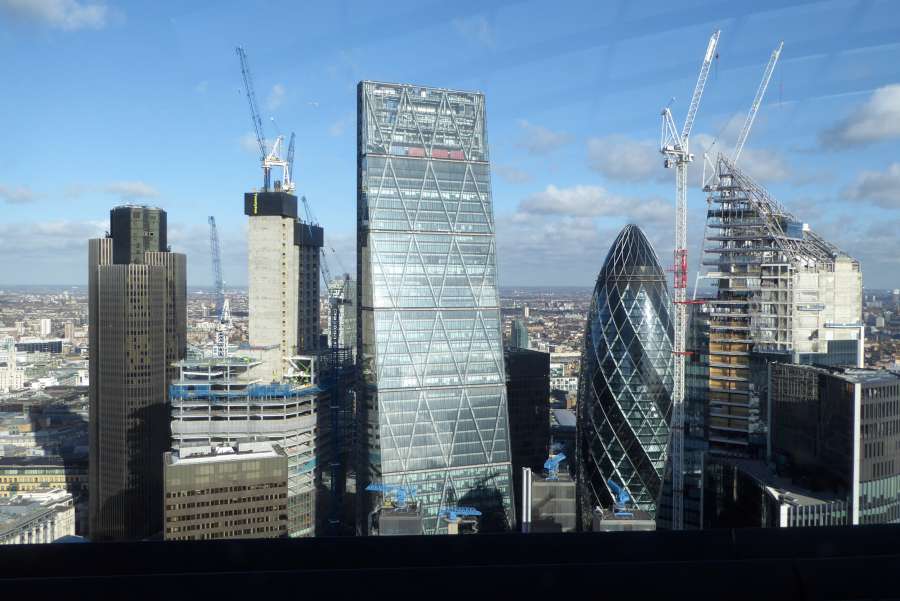
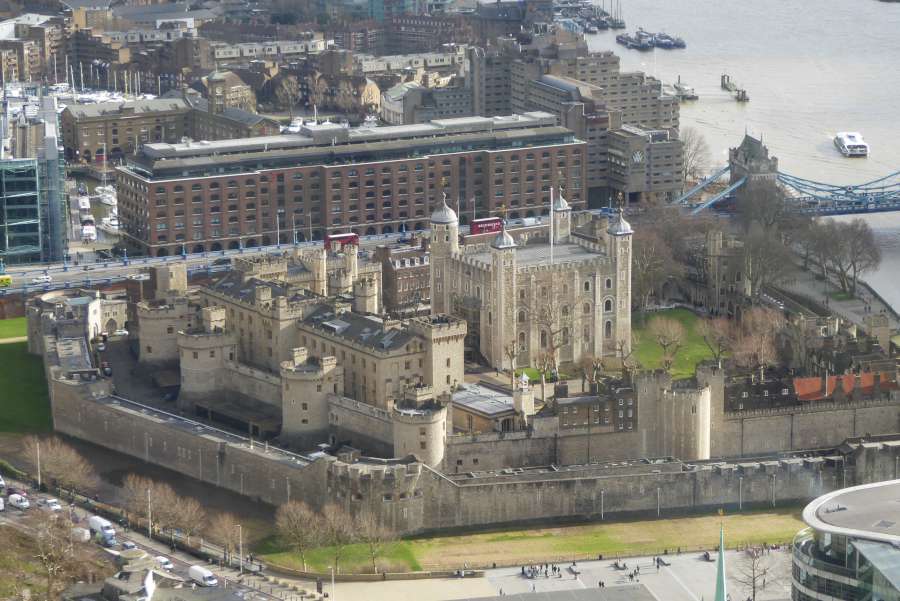
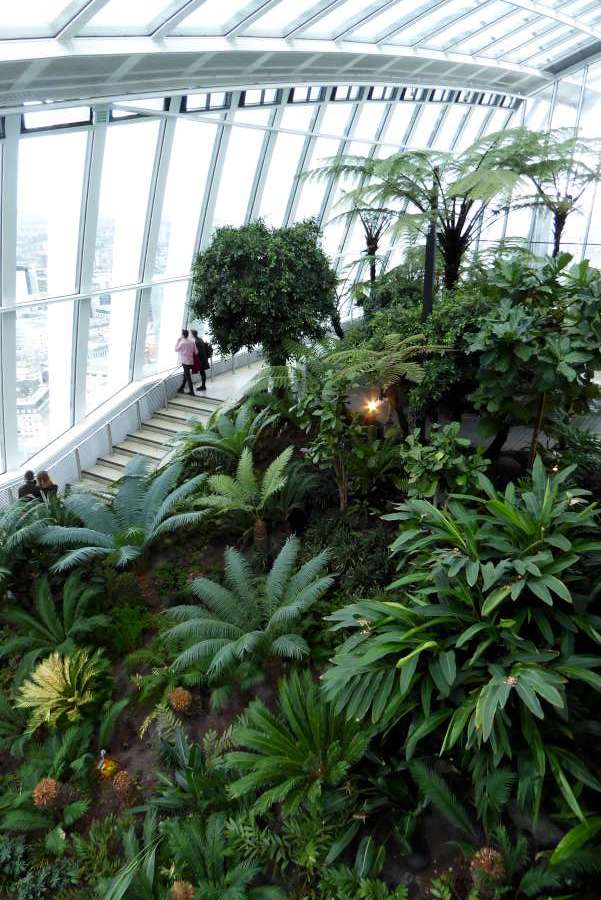
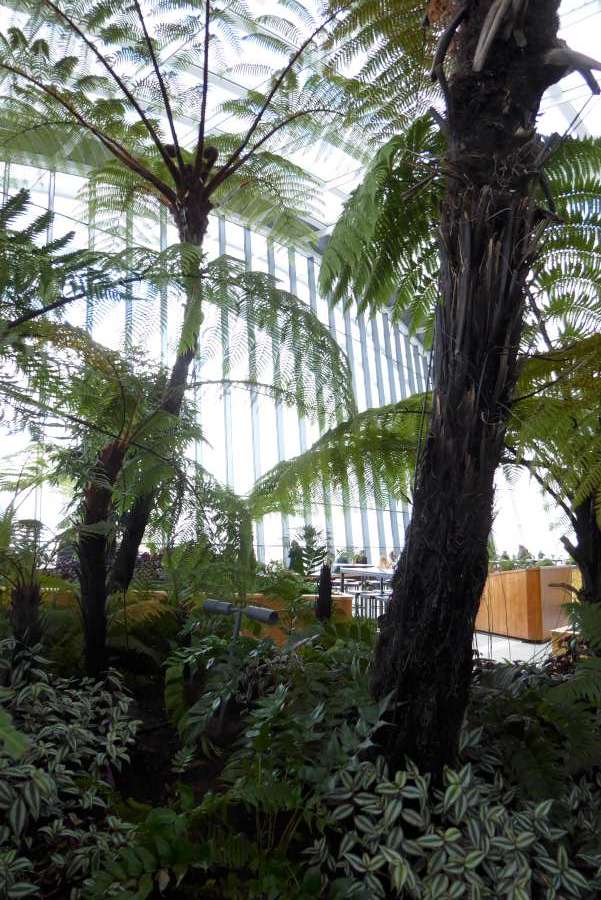
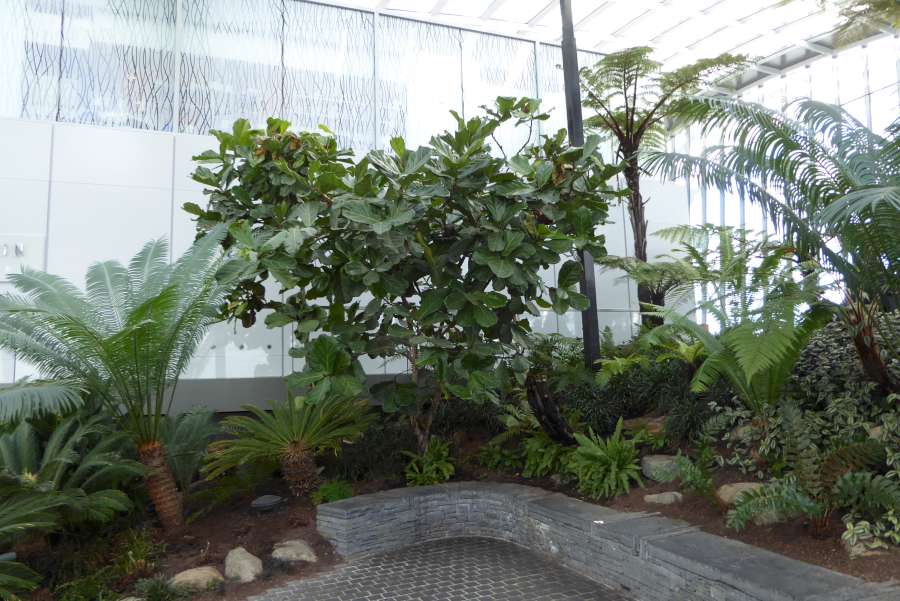
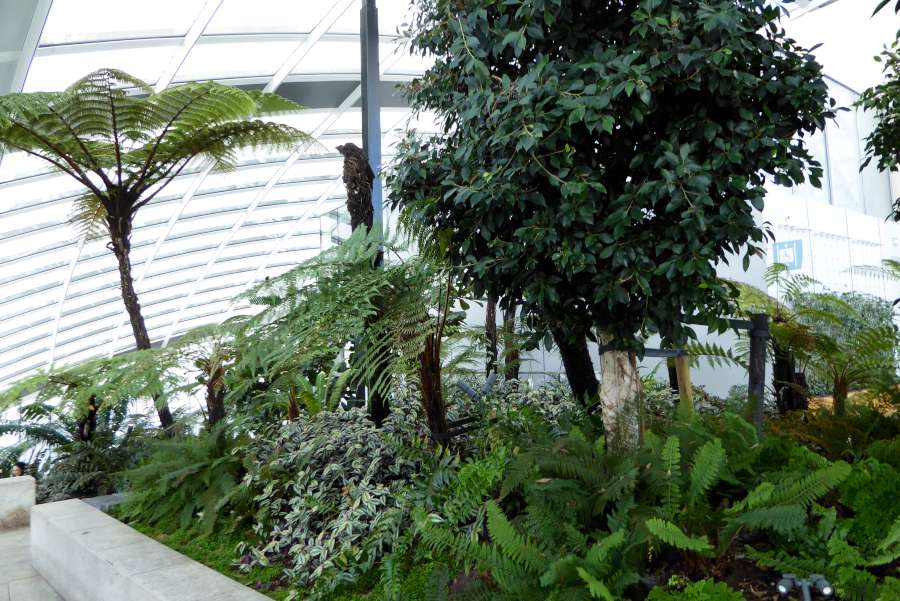
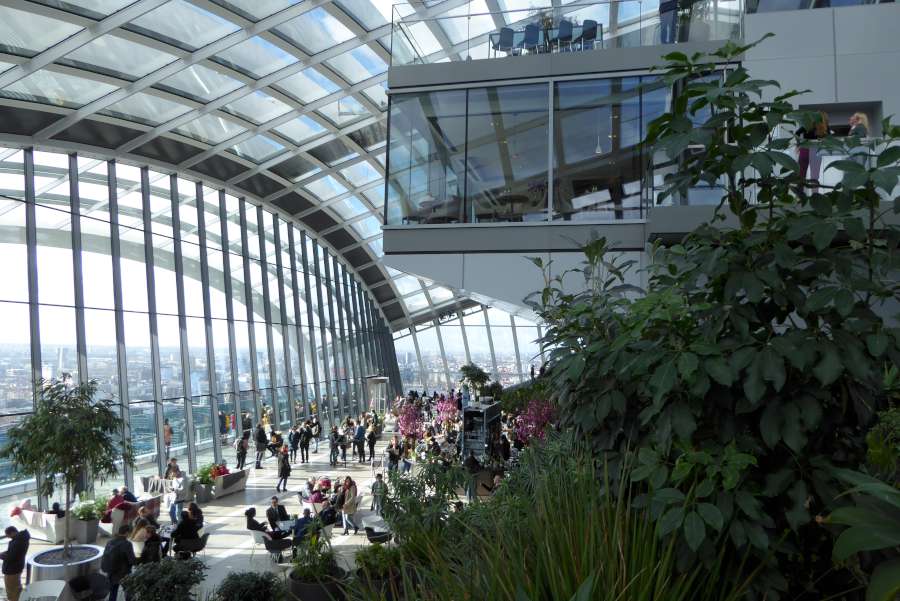
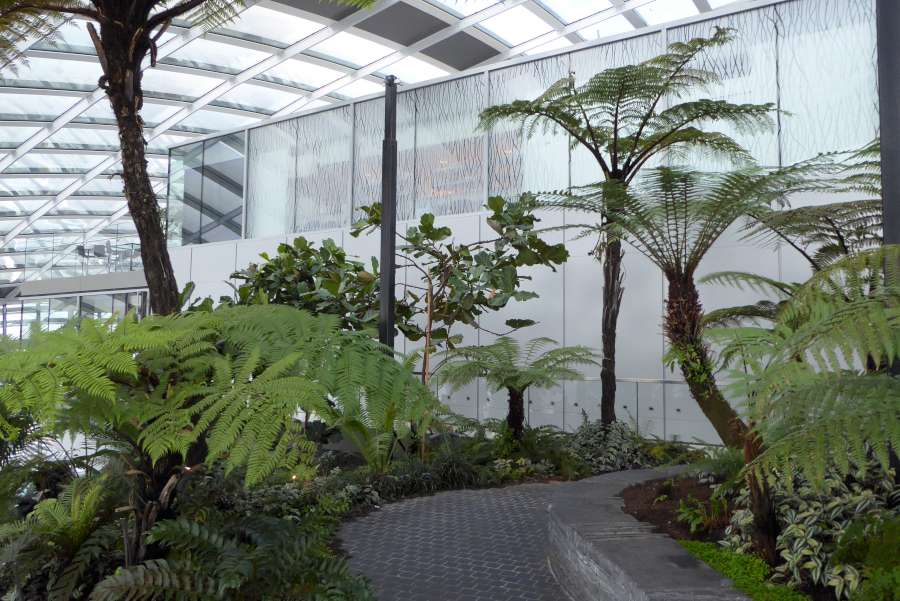
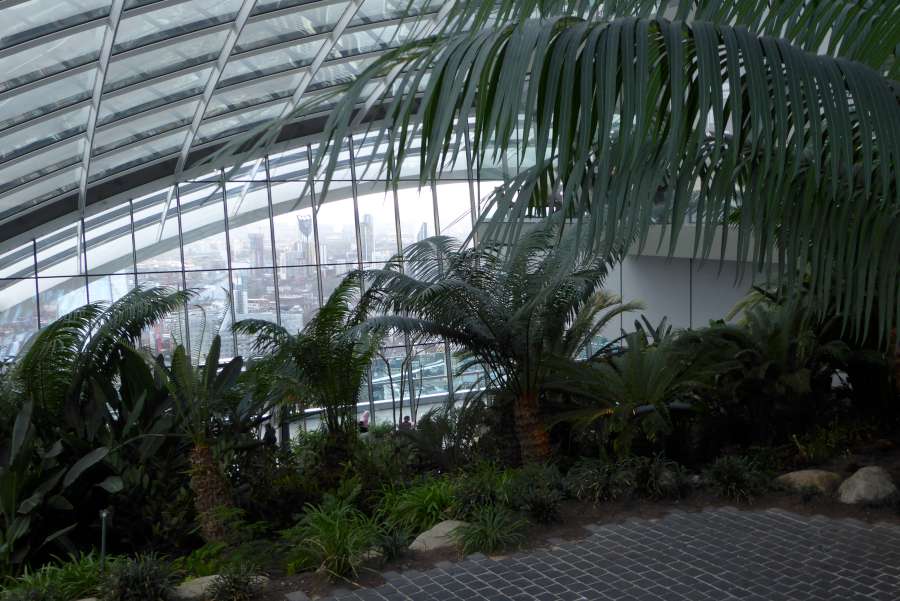
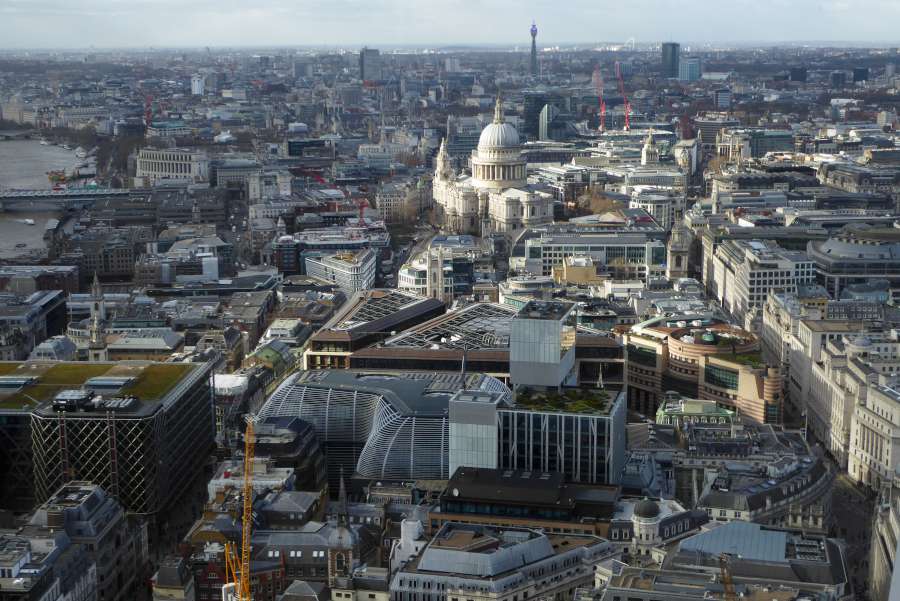
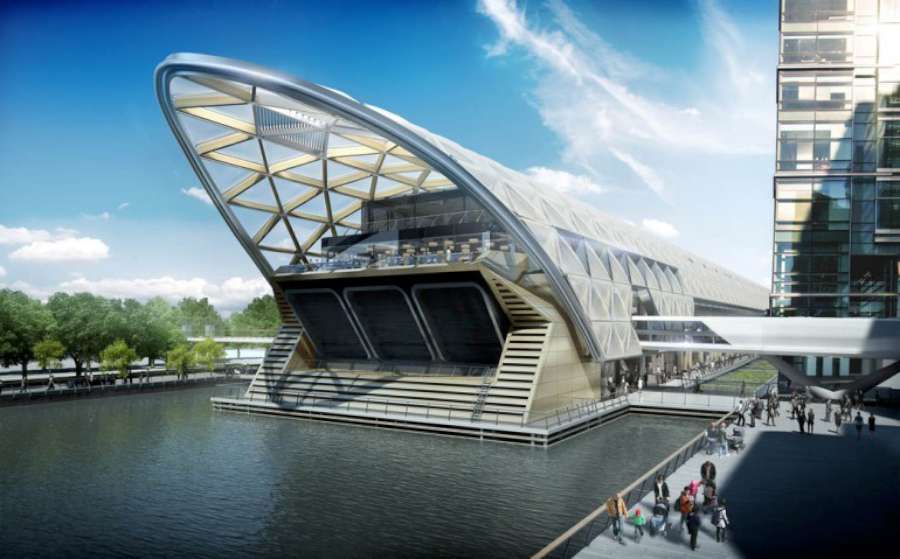
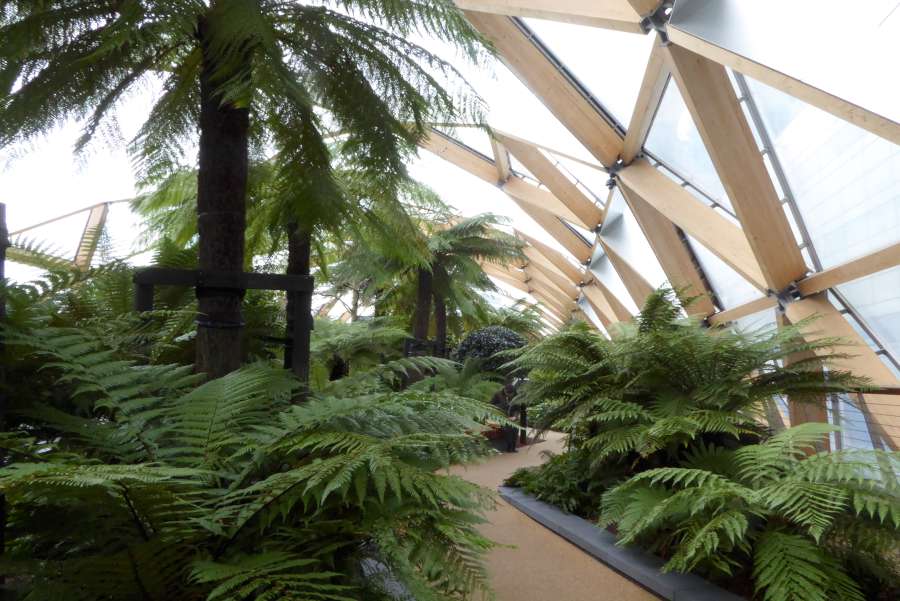
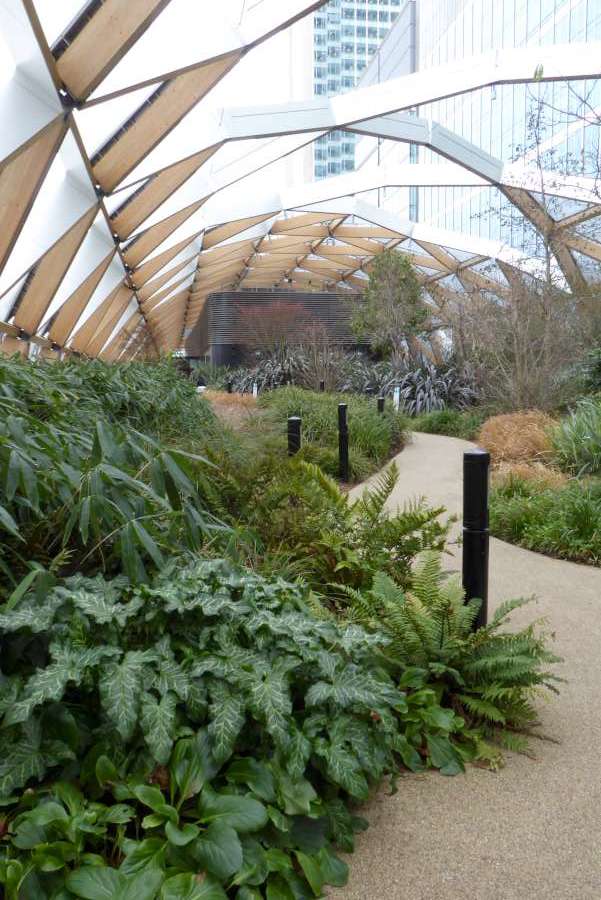
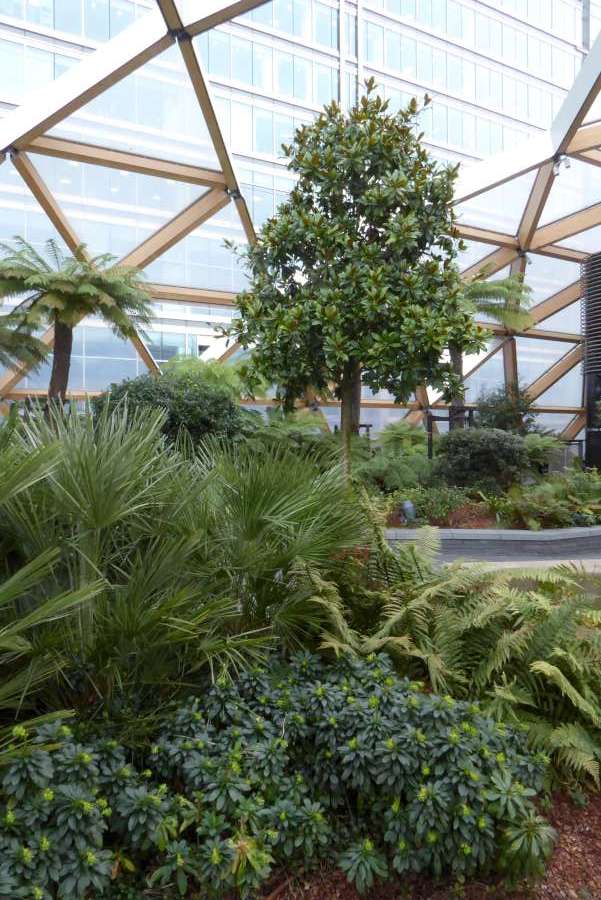
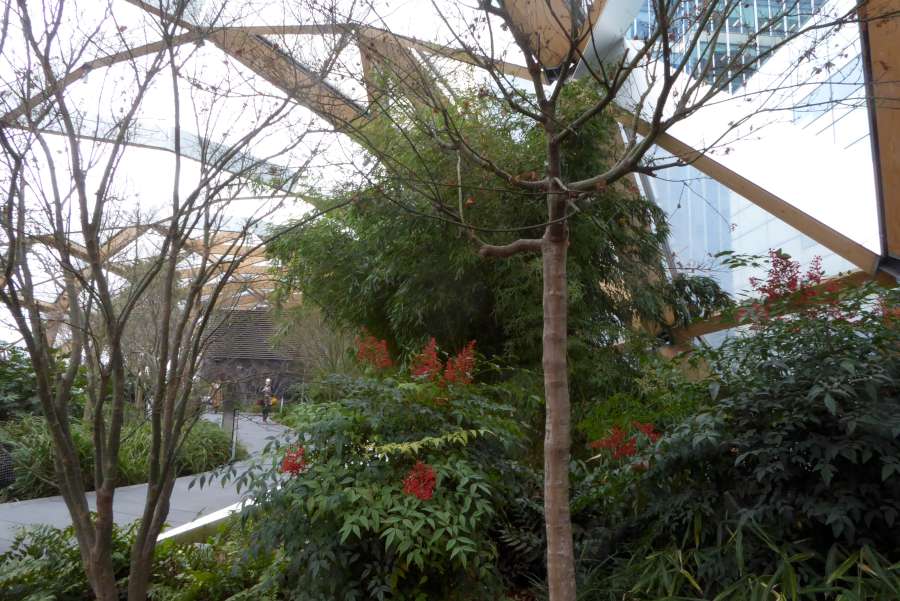
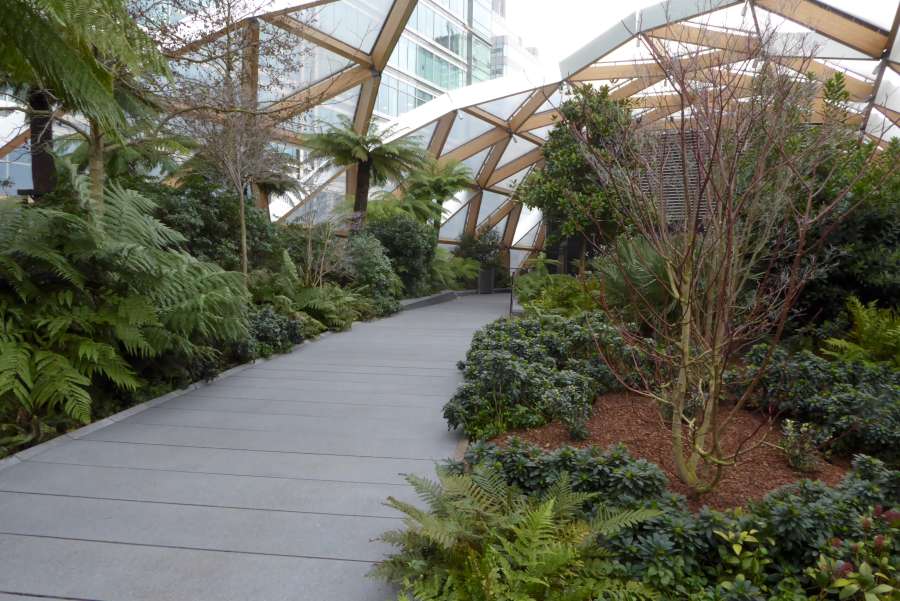
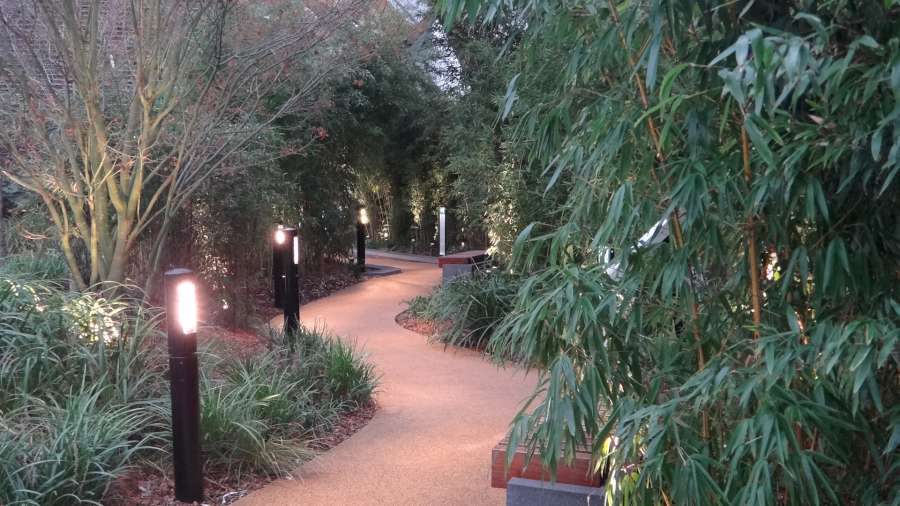
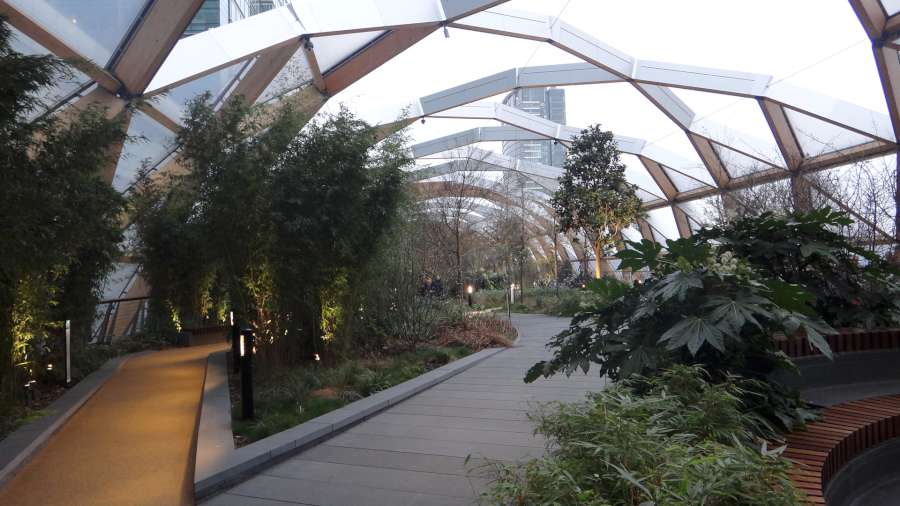
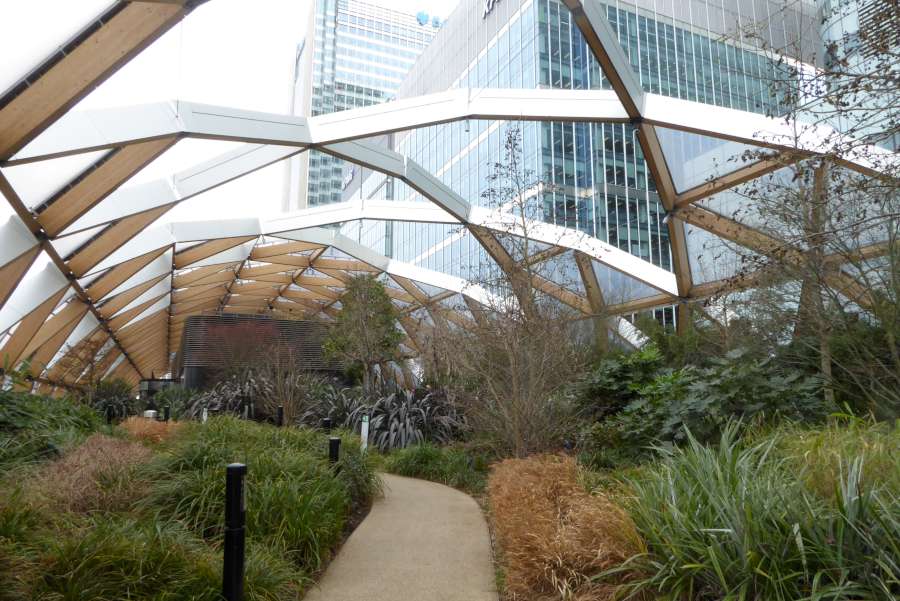
 RSS Feed
RSS Feed